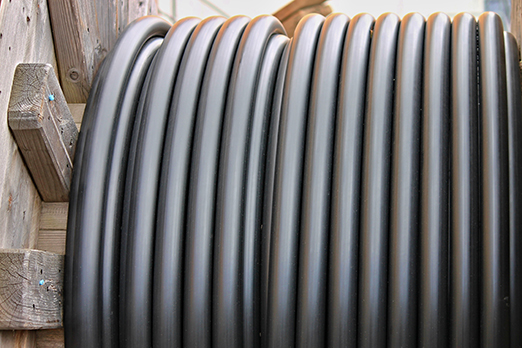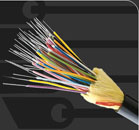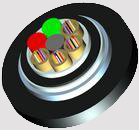PRODUCTS
- Aerial Bundled Cables
- Airport Cables
- Automotive Cables
- Alarm & Audio & Electronic Cables
- Belden Equivalent Cables
- Bus Cables
- Cable Glands
- Cables for Oil Industry
- Coaxial Cables
- Composite Cables
- Control Cables
- Data Cable
- Elevator Cables
- Fiber Optic Cables
- Fire Resisting Cable(Fireflix)
- Fire Retardant Cable(FIRETOX)
- Flame Retardant Cable (FIREGUARD)
- Flexible Cables
- Heat Detection Cables
- High Temperature Cables
- Highway Cables
- Industrial Cables
- Instrumentation Cables
- Lan Cables
- Marine Cable
- NEK606 Water Blocked Offshore & Marine Cables
- IEC60092 STANDARD Offshore & Marine Cables
- BS 6883&BS7917 STANDARD Offshore & Marine Cables
- UKOOA Offshore & Marine cables
- VG 95218 Navy Cables
- Mining Cables
- Airframe Wire
- Marine, OIL,GAS & Petrochemical Cables
- Power Cables
- Railway Cables
- Robotics
- Rolling Stock Cables
- Rubber & Crane Cables
- Security Cables
- Special Cables
- Spiral Cables
- Telephone Cables
- Thermocouple Cables
- BS 5308 Cable
- PAS 5308 Cable
- BS 5467 Cable
- BS 6724 Cable
- BS 6346 Cable
- BS 7211 Cable
- IEC 60502-1 Cable
HOT PRODUCTS
APPLICATIONS
![]() Optical Fiber Cabling
Optical Fiber Cabling
![]() General FAQ
General FAQ
9. OM1 vs OM2 vs OM3
Multi-mode fibers are described using a system of classification determined by the ISO 11801 standard — OM1, OM2, and OM3 — which is based on the bandwidth of the multi-mode fiber.
For many years 62.5/125 µm (OM1) and conventional 50/125 µm multi-mode fiber (OM2) were widely deployed in premises applications. These fibers easily support applications ranging from Ethernet (10 Mbit/s) to Gigabit Ethernet (1 Gbit/s) and, because of their relatively large core size, were ideal for use with LED transmitters. Newer deployments often use laser-optimized 50/125 µm multi-mode fiber (OM3). Fibers that meet this designation provide sufficient bandwidth to support 10 Gigabit Ethernet up to 300 meters. Optical fiber manufacturers have greatly refined their manufacturing process since that standard was issued and cables can be made that support 10 GbE up to 550 meters. Laser optimized multi-mode fiber (LOMMF) is designed for use with 850 nm VCSELs.
The migration to LOMMF/OM3 has occurred as users upgrade to higher speed networks. LEDs have a maximum modulation rate of 622 Mbit/s because they can not be turned on/off fast enough to support higher bandwidth applications. VCSELs are capable of modulation over 10 Gbit/s and are used in many high speed networks.
| Cabling System Name | Fiber Type | Connector Type | Cable Type (Premises, + fiber count) |
| OM3 | OM3 - 50/125 laser optimized | OM3 - (default LC) OM3/ST - ST connector OM3/SC - SC connector | Zipcord Distribution Breakout |
| OM2 | OM2 - 50/125 | OM2/ST - ST connector OM2/SC - SC connector OM2/LC - LC connector | Same |
| OM1 | OM1 - 62.5/125 | OM1/ST - ST connector OM1/SC - SC connector | Same |
10.Do signals really travel faster in fiber optical?
You might be surprised to know that signals in UTP (unshielded twisted pair) cables like Cat 5e travel at about the same speed (2/3 C) as in fiber optical. Coax, meanwhile, has a faster NVP (nominal velocity of propagation), about 0.9C, due to its design. Fiber's "speed" is not referring to the speed of the signal in the fiber, but the bandwidth potential of the fiber.
11.What is the distance Limitation on 100Mbps Fiber for Single Mode and Multi Mode?
Multimode 100 Mb/s (FDDI or Fast Ethernet) is limited to 2 km (1.2 miles) by the dispersion of the fiber and the chromatic dispersion limits of the LED in the fiber. This holds for both 62.5/125 micron fiber and 50/125 which exists in some older installations. Single mode links are avaialble for over 20 km (12 miles) or more. All single mode fiber for 1310 nm is the same, with a core diameter of about 8-9 microns and cladding diameter of 125 microns.
12.What is optical return loss?
For optical fibers, the loss typically happens at discontinuities of refractive index, such as splices or at an air-glass interface such as a fiber endface. This causes a fraction of the optical signal to be reflected back toward the source. The amount of reflection is determined by the Fresnel equations.
Fiber optic transmission systems often use lasers to transmit signals over optical fiber. These can be sensitive to light returning into the component. A high optical return loss (ORL) can cause the laser to stop transmitting correctly.
The measurement of ORL is becoming more important in the characterization of optical networks as the use of wavelength-division multiplexing increases. These systems use lasers that have a lower tolerance for ORL, and introduce elements into the network that are located in close proximity to the laser





